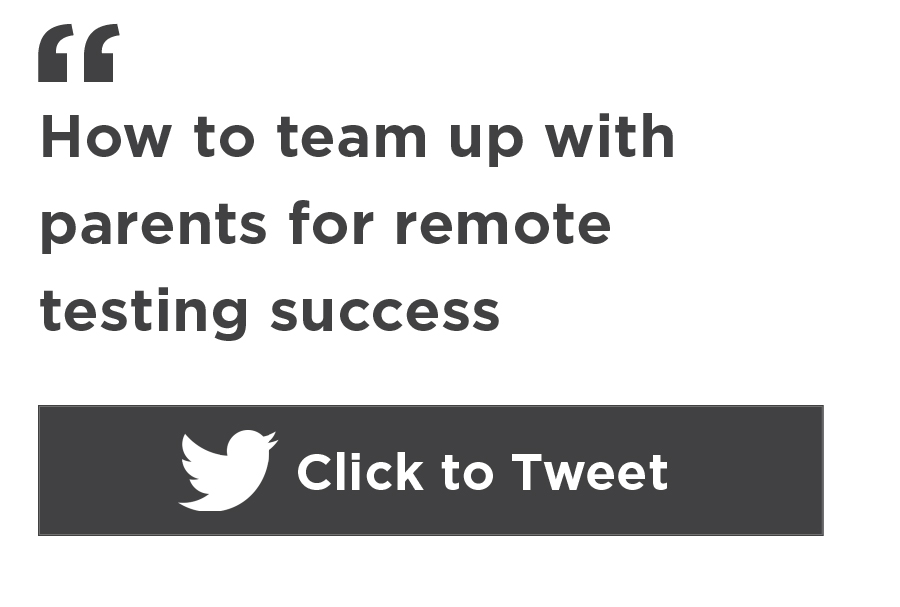Families have always been a critical part of the learning ecosystem, and last spring, their role as supporters of learning for students was elevated. A recent Learning Heroes survey found that parents were significantly more engaged in their child’s classroom work, spending an average of 2.5 hours a day—or 12.5 hours a week—on school. As we look to a school year where students will almost certainly encounter at least some remote learning, one thing we know for certain is this: families are more important to educators than ever before.
That same Learning Heroes survey revealed that while 71% of families now “have a deeper appreciation for the work teachers do in the classroom,” 65% of them are feeling anxious or worried about the new school year, and 54% are concerned about their kids staying on track academically. In other words, they believe in you more than ever before. But they’re also scared. They want meaningful and frequent interactions with you, their child’s educator, and they want to be equipped with a clear understanding of what their child is expected to know so they can effectively support learning at home. These things can ease their fears.
The pressure you’re under must feel tremendous. Let us help you make your collaboration with families a success this year—and for years to come.
Tools that give you one less thing to worry about
We’ve gathered numerous resources in the “Communicating with families” section of our Teacher Toolkit that we hope will come in extra handy during this anomalous year. Think of it as your one-stop site for MAP® Suite testing success. Here’s what you’ll find there:
- Details on remote testing. Are you feeling anxious about remote testing? You’re not alone. We’re ready to support you in administering MAP® Growth™ and MAP® Reading Fluency™ whenever you are.
- Sample letters. Whether you’re 100% remote or taking a hybrid approach, a letter to families can help you begin an assessment conversation early.
- Resources for family-teacher conferences. Learn about our Family Report, download our Family Guide to MAP Growth, or try out our brand-new Family/Teacher Planning Tool.
More on the Family/Teacher Planning Tool
We collaborated with Learning Heroes to create our new planning tool precisely because teaching and learning are so incredibly challenging right now—for everyone involved. It’s designed to help you, your students, and their families work together for academic and social-emotional success this school year.
Despite having had more time learning with their kids in the spring, families simply aren’t able to assess a student’s abilities the way a trained educator can. Learning Heroes found that 92% of families believe their child is at or above grade level in reading and math; research from NAEP in 2019 shows only 37% of those families are right. The Family/Teacher Planning Tool can help you take the first step in having conversations that honor the valuable insight families have gained on the learning and social-emotional development of their kids since March—while also pointing to what assessment data says about where a student is and how to set learning goals. It can also help you better understand students and their motivations and fears, strengthening your relationship with them.
How to use the Family/Teacher Planning Tool
This new tool is not intended to be one more thing for you to worry about this fall. It’s a resource to support everything you’re already doing to engage families as students come back: introductory calls home, a Zoom open house night, in-person conversations with families when possible. Here’s how to use it.
- Give your beginning-of-the-year assessment. If you’re not ready to test this fall, use the most recent assessment data available.
- Add each student’s results to the tool. Consider doing this in collaboration with students as part of your student goal-setting process. For kids in middle school and above, have them complete the student portions, too.
- Send the tool home to gather valuable input and insight from families on academics and social-emotional learning. No one knows kids better than their families do, and their insight is sure to make your job easier.
- Collaborate with each family and student on goals for the year. These can align to classroom learning goals, student growth goals, and even goals that families have for their students.
Teamwork makes the dream work
I’m sure working alongside families has always been a priority for you. As you face the challenges of doing so amid COVID-19, we hope the Family/Teacher Planning Tool will help you begin to build trust and honor family perspectives with this year’s new families—even if it all ends up happening on a Zoom call. For more ideas on how to approach this uncertain new school year, read “Analysis: Safety, trust, high expectations—how families & teachers can work together so this isn’t a lost year for students” by Bibb Hubbard and Cindi Williams in The 74.









